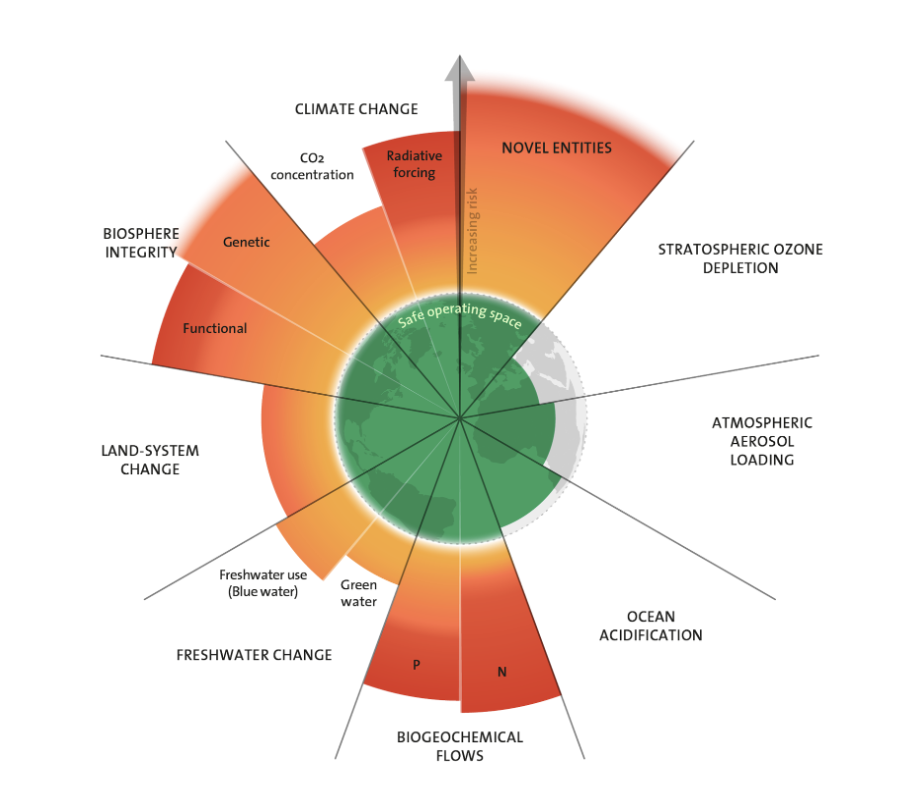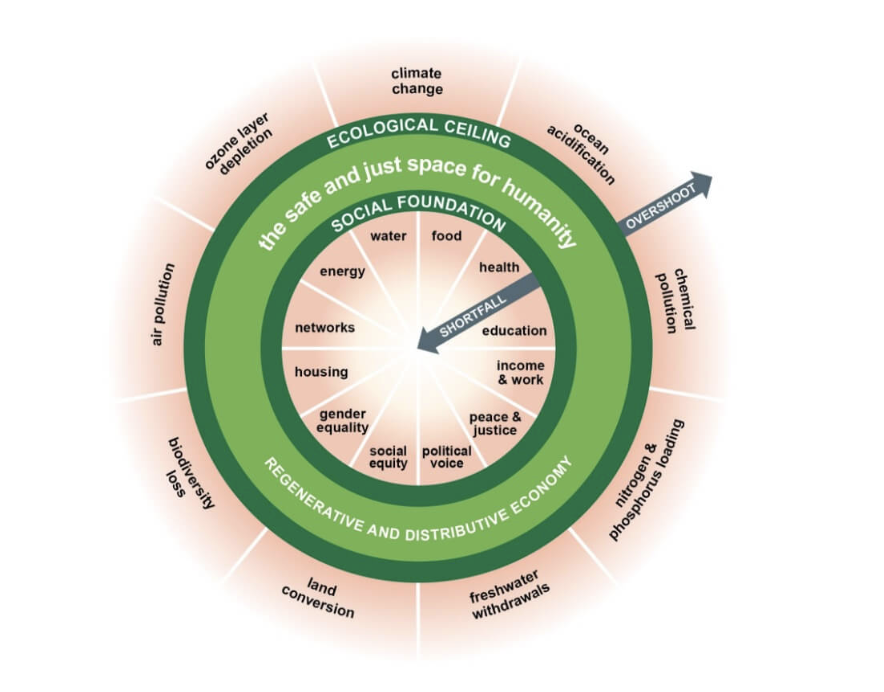


Planetary boundaries are a set of scientifically defined environmental limits within which humanity can sustainably survive. These thresholds establish a “safe operating space” for human development, ensuring that the earth’s systems remain stable and resilient. Crossing these boundaries increases the risk of triggering large-scale, potentially irreversible environmental changes.
The concept was introduced in 2009 by a team of twenty-eight leading earth system and environmental scientists, led by Johan Rockström of the Stockholm Resilience Centre and Will Steffen of the Australian National University. Their pioneering framework identified nine critical earth system processes and proposed measurable boundaries for each to safeguard planetary stability.
The primary goal of this framework was to shift the global conversation away from a purely economic or human-centered model of progress and toward one that recognizes the physical and ecological limits of the earth. It offers a clear scientific foundation for sustainability that could inform policy, reshape economic systems, and guide human activities to ensure the long-term viability of life on earth.
Before this framework, environmental challenges such as climate change, biodiversity loss, and deforestation were typically studied in isolation and treated as separate issues. The planetary boundaries approach introduced a systems-level perspective, emphasizing how these processes are deeply interconnected. Pressure on one boundary can cascade into others, compounding risks across the earth system. This wholistic understanding has helped scientists, decision-makers, and the public grasp how human activity is destabilizing the planet on multiple fronts.
The framework has evolved alongside advances in earth system science and the collection of more comprehensive data. Boundaries have been refined, and new methodologies have been developed for measuring planetary pressure. For example, the original boundary of “biodiversity loss” was reconceptualized as “biosphere integrity” to capture not just species extinction but also the degradation of ecosystem functions. In 2015, scientists reported that four of the nine boundaries had already been crossed. By 2023, that number had grown to six, and as of 2025, a seventh has now been breached.

* Image from https://www.stockholmresilience.org/research/planetary-boundaries.html
The planetary boundaries framework has profoundly influenced new economic thinking. It has inspired alternative models that reject the assumption of infinite growth on a finite planet. One of the most influential economic models to incorporate the planetary boundaries framework is Kate Raworth’s “Doughnut Economics,” which integrates planetary boundaries (which she calls environmental ceilings) with social foundations (basic human needs) to define a safe and just space for humanity. The planetary boundaries framework has also energized movements advocating for degrowth, circular economies, and wellbeing-oriented development, all of which aim to decouple prosperity from unchecked resource use.

* Image from About Doughnut Economics | DEAL
Traditional economic models often treat the environment as an externality to be exploited without limit. The planetary boundaries framework disrupts that view, insisting that economic activity must remain within earth’s physical limits. It challenges us to fundamentally rethink what we value, how we grow, and what kind of future we are building.
According to current scientific consensus, we have breached seven of the nine planetary boundaries.
The remaining boundaries have either not been fully breached (atmospheric aerosol loading) or are recovering (stratospheric ozone depletion).
The global food system, particularly industrial livestock production, is a dominant force behind the transgression of multiple planetary boundaries. Below is a breakdown of how food and livestock impact each of the seven breached boundaries.
1. Land-System Change
Humanity has significantly altered over 75 percent of earth’s land surface, and land-use change is now four times greater than previously estimated. Agriculture dominates this transformation.
The planetary boundary for land-system change has long been breached, with catastrophic consequences for biodiversity, climate regulation, and Indigenous land rights.
2. Biosphere Integrity
This boundary is considered one of the two “core” planetary boundaries (along with climate change) whose breach could lead to irreversible earth system shifts. Biosphere integrity has been deeply undermined by the expansion of animal agriculture.
3. Freshwater Change
The freshwater boundary has recently been added to the breached list, recognizing that both blue water (surface and groundwater) and green water (soil moisture) systems are under extreme stress.
With aquifers depleting and rivers drying up, reducing freshwater stress is essential; transitioning to plant-based agriculture could help achieve that.
4. Climate Change
The climate boundary, set at atmospheric carbon dioxide concentrations of 350 parts per million (ppm), was breached decades ago. We are now beyond 420 ppm and locked into a future of warming, extreme weather, and ecosystem upheaval.
Plant-based diets offer a powerful mitigation tool for reducing methane and deforestation-linked carbon dioxide emissions.
5. Ocean Acidification
About 30 percent of carbon dioxide emissions are absorbed by oceans, where they form carbonic acid and lower the pH of seawater.
6. Biogeochemical Flows (Nitrogen and Phosphorus Cycles)
This boundary has been massively exceeded due to industrial fertilizer use and manure overload from concentrated animal feeding operations.
Reducing livestock feed production would drastically decrease nitrogen and phosphorus use and mitigate these toxic impacts.
7. Novel Entities
This boundary encompasses synthetic chemicals, plastics, pesticides, and genetically modified organisms (GMOs). It was breached in 2022.
The livestock industry is deeply entwined with chemical-intensive monocultures of corn and soy, driving novel entity proliferation.
The planetary boundaries framework makes one thing abundantly clear: we are living far beyond the safe operating limits of earth’s life-support systems. And at the heart of this transgression is the global food system, particularly industrial livestock production.
From land and freshwater degradation to climate destabilization, biodiversity loss, and chemical pollution, the food we eat is shaping the future of life on earth. Transitioning to plant-based diets is not just a personal health choice—it is an urgent planetary necessity.
We are approaching a precipice. The longer we delay, the more life systems will unravel. But we still have time to shift course. By reimagining our food system and embracing sustainable, plant-centered alternatives, we can begin to pull back from the boundaries we’ve crossed and create a future that respects the limits of our only home.
Copyright 2026 Center for Nutrition Studies. All rights reserved.